I’ll admit. As someone who spends a big chunk of my life experimenting with food and creating new recipes, I’ve become a total nerd (connoisseur, if you’re fancy) when it comes to knives. I’m a collector, a fanatic; really, I’m enthused over knives! And since the people have been asking, I figured it was time to do my due diligence in sharing my personally curated collection of the best chef’s knives on the market.
In this article, I’m strictly comparing four widely available name-brand knives, four popular Internet-brand knives, and one special knife that’s a little harder to get your hands on. But to keep the scale fair, we’re only comparing chef knives to chef knives—Santoku, paring, utility, bread, filet, boning—all different knives with specific purposes. But the 8-in Chef’s knife, by and large, is the most versatile and most reached-for knife in my knife drawer.
Disclaimer: none of these knives are bad!—I don’t save space in my knife drawer for knives that are. But some are definitely better than others, so hopefully, this guide gives you the info you need to choose which knives are best for you.
All right, lights, please.
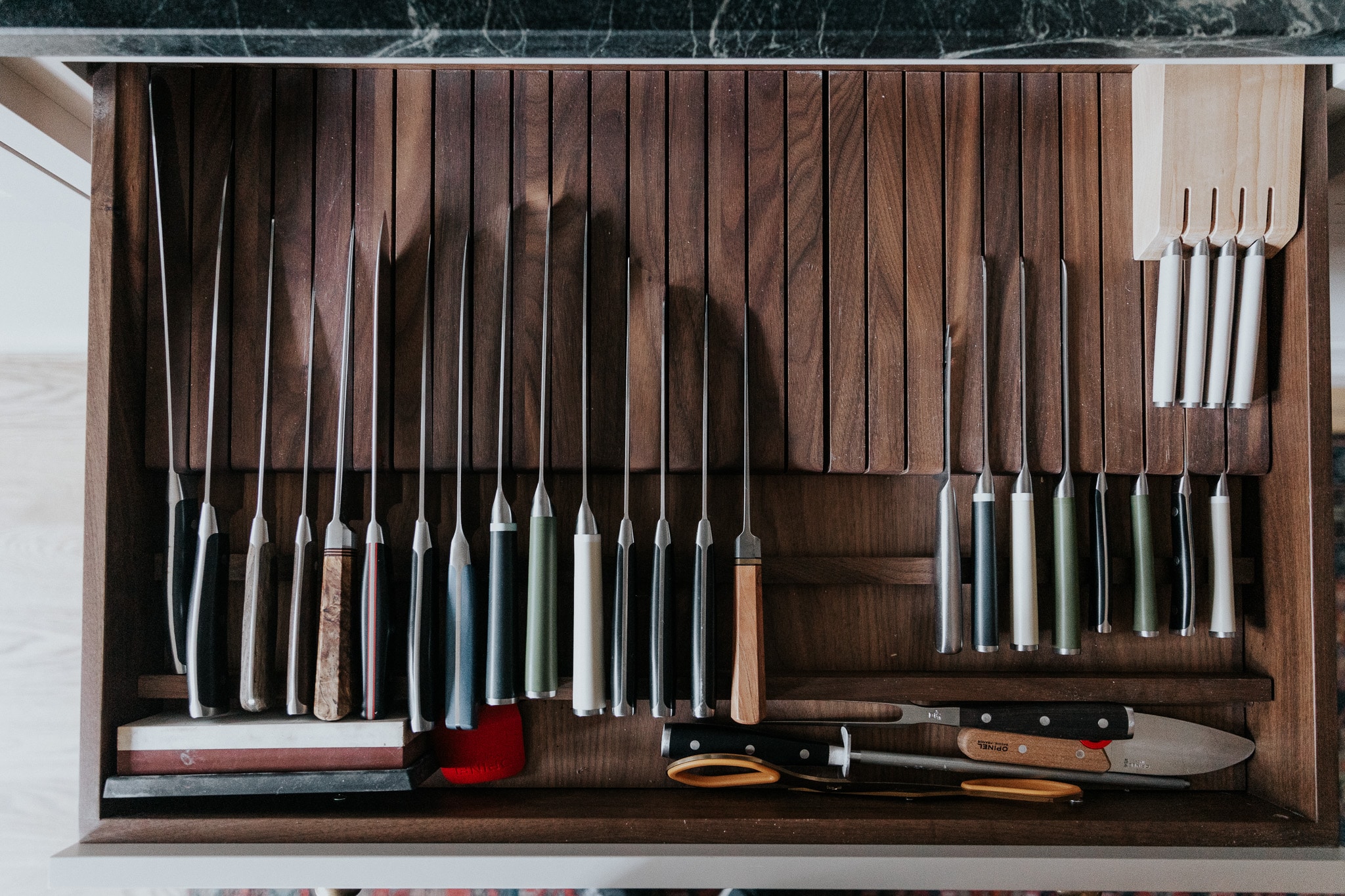
Shop Chris’s Favorite Knives
Japanese vs. German steel
Before I get too ahead of myself, let’s take a minute to understand what makes one knife different from another. Traditionally, Japanese steel contains a higher amount of carbon than German steel. The higher the carbon content, the harder the steel. While Japanese steel tends to stay sharper longer, it’s also more susceptible to chipping and breaking since there’s less give. It’s also more difficult to sharpen at home, so you often end up shipping your knives off to be sharpened or finding a local service to do it. On the other hand, robust German steel is a hallmark of durability, although it does need more frequent sharpening, which can be done from the comfort of your own kitchen.
Now, with so much advancement in technology, material blends, and measured precision in the forging process, I’ve come to look beyond the carbon content alone. Enter the Rockwell C Scale (HRC)—the arbiter of hardness. Basically, the higher the HRC number, the harder the steel.
Stamped vs. Forged
Now, let’s talk about craftsmanship. A forged knife goes through several rounds of heating, pounding, and cooling. This helps with durability, as well as reducing impurities in the steel. It can also contribute to the beauty of the blade, such as when steel is folded on itself during the forging process (as with Damascus steel).
Stamped knives are made from sheets of metal run through a machine that stamps out the profile of the blade, after which the edge is added. Though economical and faster to make, they lack the longevity of their forged counterparts. I have yet to find a stamped knife that’s comparable to even the cheapest forged knife.
Moving onto the fun part, here are my most recommended chef’s knives.
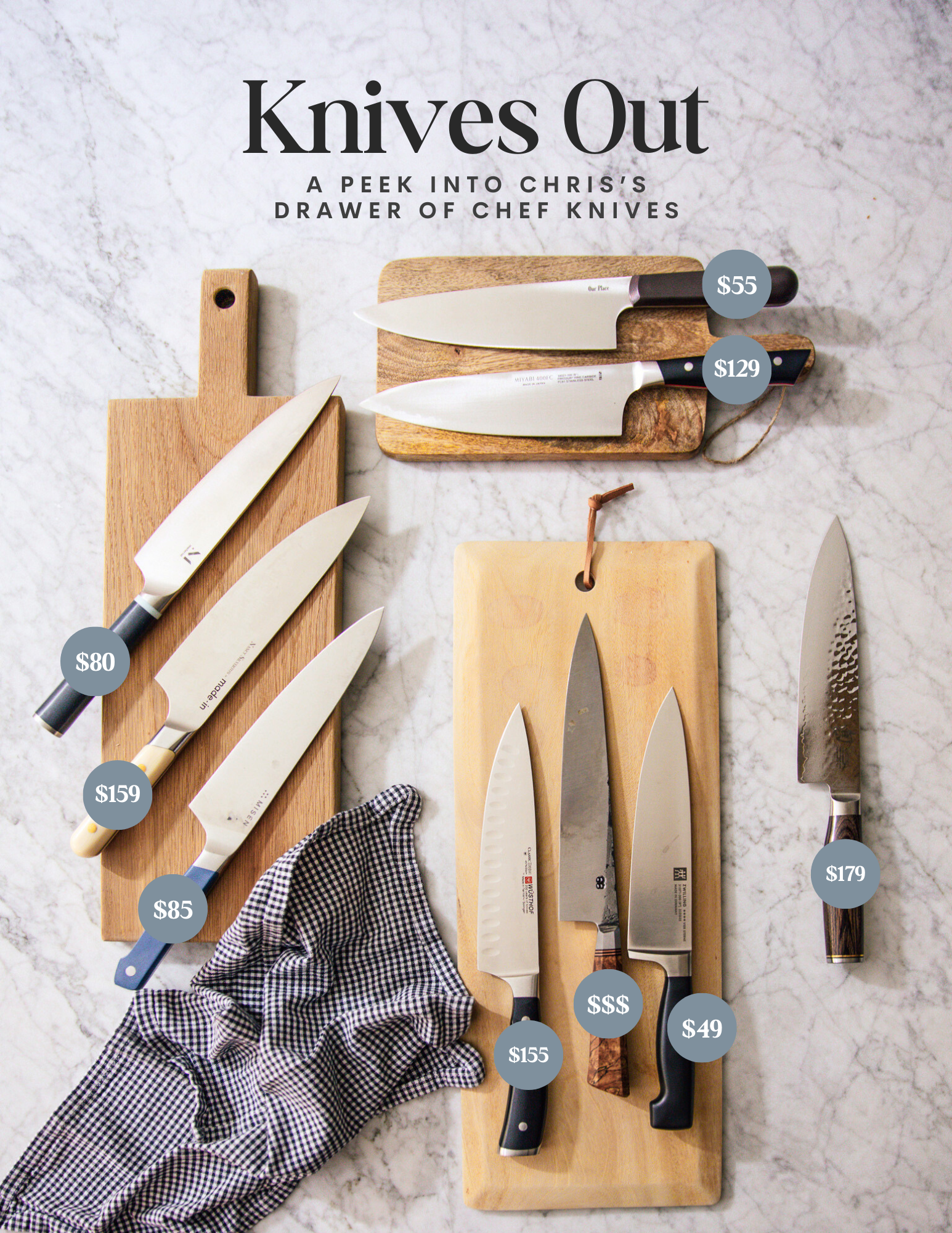

Zwilling is one of the oldest knife companies in the world. Originally founded in Germany, the Zwilling knives are really approachable, and, as with most brands, they have entry-level and high-end offerings. The knife I have is from their Four Star collection, which is kind of a mid-range (though it’s the least expensive on this list and often on sale). The steel is a bit softer, but its initial sharpness is excellent, and it sharpens easily. If you are on a budget but want one good knife to last you a few years, this is a great option (though you should plan on investing in a sharpener as well).

Miyabi is the Japanese steel brand of the Zwilling Henckels family, and they are a really great knife. Mine is from their Evolution line, and I’ve had it for about six years and have never sharpened it. Not one time (though I’m getting close). It’s not my everyday knife, but I love breaking it out when I’m really in the mood to cook. It’s a knife that just feels special.

Going on 10 years, this Wusthof Classic Ikon Chef’s knife is the longest-standing knife in my current collection. This is the knife I use almost every night while cooking dinner. And while they no longer offer the hollow edge 8-in chef’s knife, the normal edge is a treat to use as well.
That said, I’ve realized recently that the reason I continue reaching for this one time and time again is mostly because of familiarity. Several of my newer knives work just as well or better, and are more comfortable. For maximum comfort, the blade and handle should be about equal in weight (the blade should balance by holding it somewhere on the bolster or base of the blade), and this one is heavier toward the handle.

What Wusthof is to German steel, Shun is to Japanese. They’re really the two big names and very comparably priced. Shun offers a wider variety of lines, and they quickly become cost-prohibitive for many. But it’s also a fantastic knife. I give the comfort and balance each a solid 5, and this is the only knife I have that I can say that about. If you have a little more room in your budget and want something special, the Shun Premier is hard to beat.
That said, be careful with the blade. Don’t try cutting through chicken bones or using the tip to open cans of tomato sauce – you’ll chip the blade real quick – especially the tip. Save this one for vegetables, fruits, and boneless meats.

The first of our Internet brand knives, Misen, makes a good knife. Though it’s forged from Japanese steel, the HRC is on par with Wusthof’s German steel. Of the mass-produced knives I have, this is, unfortunately, the only one I’ve experienced any discoloration with. Even still, it’s not anything that will hurt anybody, and I don’t let it bother me.
I don’t find myself reaching for this one very often. It’s fairly imbalanced in the handle, similar to the Wusthof. Everything about the knife, I would put in the “good” category, with the exception of the balance. So if you really like the look of it, I think it’s worth considering.

I like the Our Place knife, and Julia reaches for it most. The design is unique, and they offer a lot of handle colors, which people like. In terms of price and performance, it’s very on par with the Zwilling Four Star. If you’re looking for a good knife that’s really affordable, either one is good—just depends on which one you like the look of.

If Wusthof is my dinner knife, Material is my daytime knife. Cumulatively, I probably use this one more than any in my drawer because it’s a quality knife, great design, and is super comfortable. Additionally, it’s affordable and also comes in some beautiful colors. I’ve given several of Material’s sets away as gifts, and they always get rave reviews. For the money, this one is a solid investment.

I only recently started using Made In knives, but I’m finding myself reaching for it more and more. It leans a little on the premium side as far as price goes, but it cuts like a dream and is really comfortable. The blade is a bit larger, so it seems like it should be out of balance, but that’s not the case. Perfectly balanced and a nearly perfect knife.
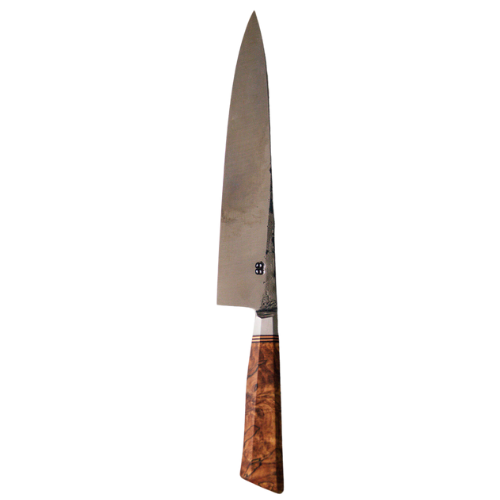
Now, a lot of this ranking is unfair once this knife comes up because it truly is a masterpiece. Bloodroot Blades is a company based out of Georgia and is run by Luke Snyder and David Van Wyk—two normal guys who make astoundingly good kitchen knives. All of their blades are forged from recycled steel, and they patina like a fine leather catcher’s mitt. I use this knife once or twice a week, and I wash it thoroughly and rub it with blade oil after each time.
Luke and David only make a handful of knives each month. So, in order to buy one, you first have to join their mailing list. Once they make their sale live, they send out an email, and anyone can go to their site and select the knives they’d like to purchase. Then, you’re entered into a lottery for those knives. If your name is picked, you have 24 hours to purchase the knife before it goes to the next person.
This mailing list is thousands of people long. I’ve entered every month for years and am lucky enough to have been selected twice! Using these knives is a true pleasure—they feel like something made by a craftsman and not a businessman, ya know? And in the world of kitchen knives, there are more and more blade smiths popping up who are creating truly special pieces. And rarely are these cheap (each of my knives were north of $1000).
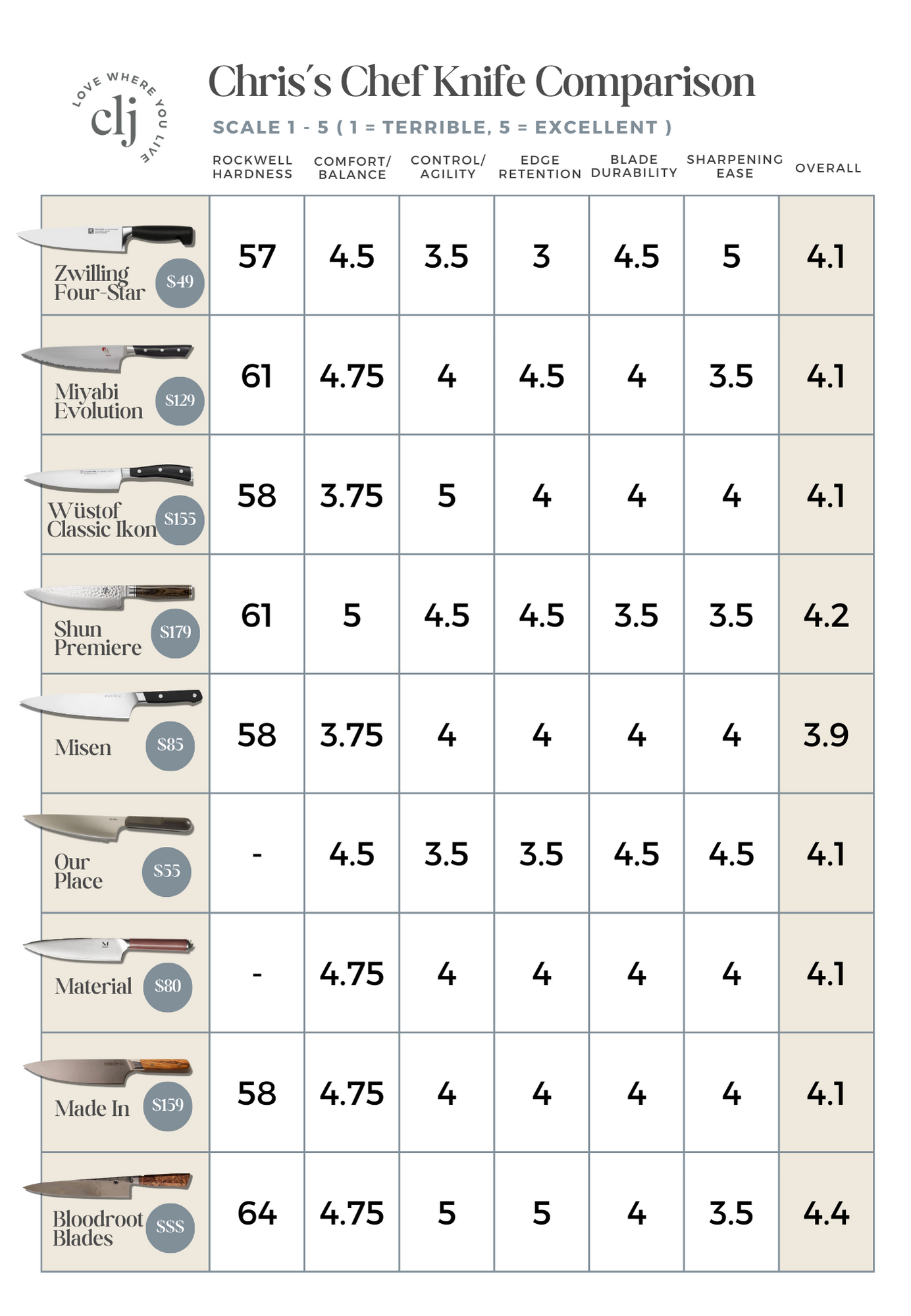
I don’t like to choose favorites, but if I had to choose my three best chef’s knives, I would put my Wusthof knife in third place. It’s my tried-and-true, ride-or-die knife.
Second place goes to the Material knife. It’s the knife I reach for the most, and it really can’t be beat at that price point.
And, predictably, my first place goes to my Bloodroot Blades knife. Now, it’s not lost on me that it’s out of the realm of practical for most. And I also know that many people will think it’s silly to spend that much money on “a knife.” But to me, it’s not just a knife—it’s art. And not just art that hangs on a wall or plays on a stereo. Art that I can hold. Art that becomes an extension of me while I attempt to create art of my own through the food I make. They’re a reminder of what people can accomplish when they care about what they do, and I find that encouraging. We all choose the things we want to splurge on, and Bloodroot Blades is that for me.
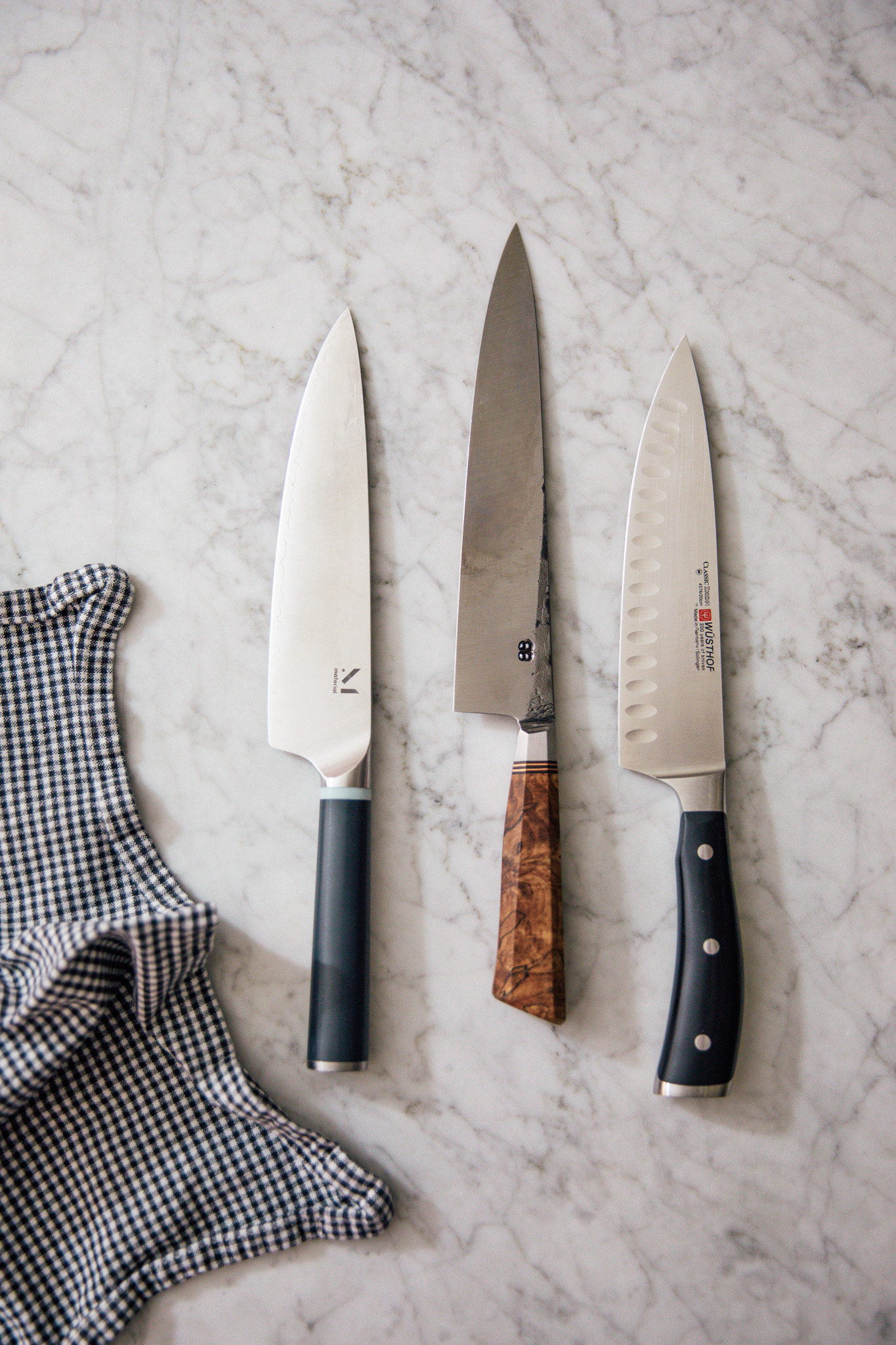
Material | Bloodroot | Wusthof
Caring for Your Knives
Even the best chef knives require love and care. Here’s how I keep my blades in prime condition:
- Honing: A honing steel does not sharpen knives. It’s used to straighten the microscopic blade edge and should be done before cooking and after washing – just a few passes.
- Washing: Never put a knife in the dishwasher. Always hand wash, approaching the blade from the back of the knife to avoid cuts. Never submerge in a tub of soapy water where the knife disappears from site—reaching into that water to retrieve the knife is a dangerous roll of the dice.
- Storing: Knives should be stored so that the blades are secured and not clanging against anything else. Instead, use a magnet strip on the wall, a knife block, or a drawer with separated knife storage. If knives are placed in a drawer where they clang around, spend a few dollars to buy blade covers and protect your investment.
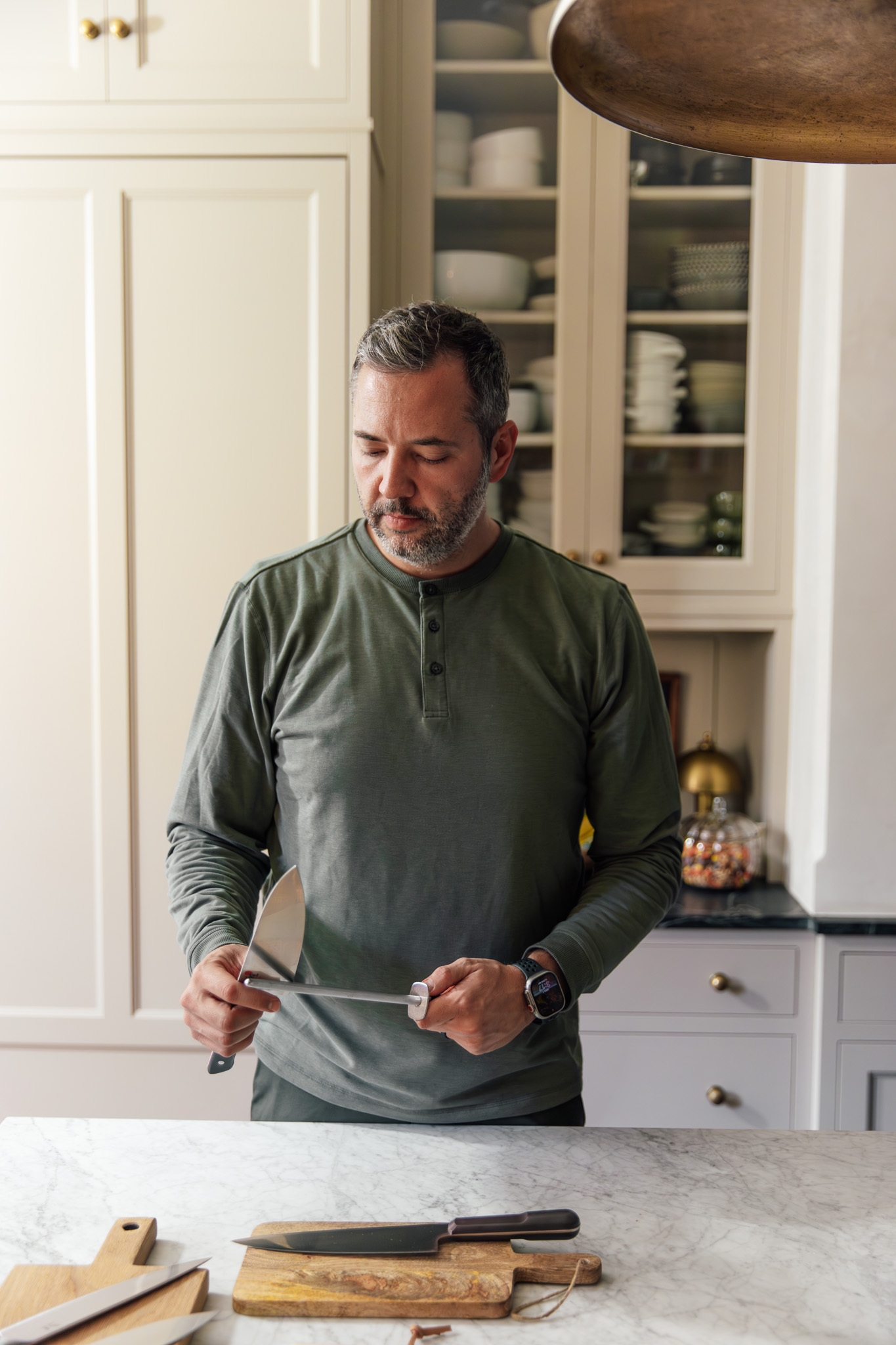
Shop Kitchen Sources
Finding the right best chef knife for you isn’t going to be the best knife for someone else. Whether it’s the affordable Zwilling or the exquisite Bloodroot Blades, each knife has a place, and can become a long time kitchen companion if properly cared for.





